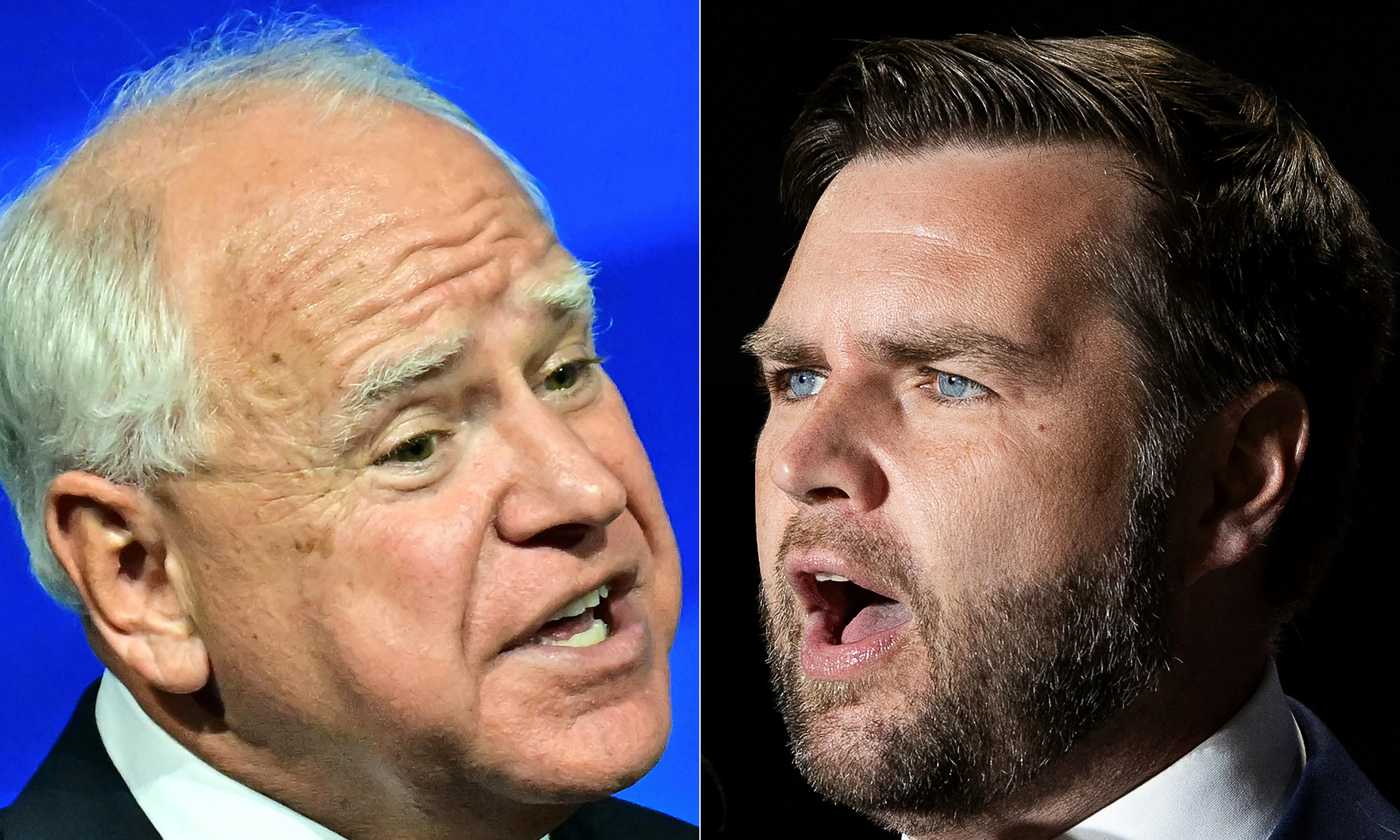While Donald Trump recently refused to debate again with Kamala Harris, it is the turn of their running mates to take the lead. Exactly three weeks after the tense debate between the two candidates for the presidency of the United States, Republican Senator JD Vance and Democratic Governor Tim Walz are due to meet this Tuesday, October 1 for their first (and probably last) televised debate.
For 90 minutes, the aspirants for the American vice-presidency will compete on the American channel CBS with no audience other than the tens of millions of expected viewers. The rules of the duel are fixed: they will not be allowed to bring written notes and, unlike the last debate between Trump and Harris, the microphones will remain open, allowing the adversaries to cut each other off. This verbal joust will be an opportunity for these lieutenants to make up for their lack of notoriety before the November 5 election, although Tim Walz is already more popular than his JD Vance in the polls.
Two elected officials from the Midwest who are still little known
On paper, however, both have a similar profile. Indeed, the two elected officials were chosen to appeal to a rather white and popular electorate from the north and central United States, where they come from. On one side, Tim Walz, a former teacher with rural origins, a native of Nebraska and governor of Minnesota. On the other, JD Vance, who recounted in a successful book his difficult childhood in an America devastated by deindustrialization.
Above all, both remain relatively little known to the general American public. Tim Walz, governor of Minnesota, was little known outside his state when Kamala Harris chose him in August to form the Democratic ticket with him. As for JD Vance, despite the success of his book, the senator had very little political experience before Donald Trump offered to assist him in July. From then on, this duel of running mates is seen for everyone as an opportunity to make up for their notoriety deficit.
However, the polls currently show JD Vance losing in this race for popularity. This is confirmed by a recent survey, revealed Wednesday September 25 by the American agency Associated Press and the National Public Opinion Research Center (NORC) in Chicago. Thus, “nearly half of registered voters have a somewhat or very unfavorable opinion of Vance, compared to about 4 in 10 at the end of July, while about a quarter have a somewhat or very favorable opinion of him,” the poll indicates.
Walz more popular in several polls
Conversely, the agency specifies that approximately “3 in 10 voters have a negative opinion of Walz, while approximately 4 in 10 have a positive opinion.” Indeed, although the Republican running mate initially had a lead over his Democratic opponent thanks to his book and his anti-immigration media statements, Tim Walz has gained popularity since his nomination to the presidential ticket. He notably found a certain echo in the media by describing several times as “suspicious” (weirdin English) the Trump-Vance tandem.
The slight lead of vice-presidential candidate Tim Walz also seems to be found in several states in the American Midwest, where the two running mates come from, according to another poll published Sunday September 29 and carried out by the American daily New York Times with New York University Siena. In this questionnaire, voters in Michigan, Ohio and Wisconsin indicate that they prefer the Democrat to his Republican opponent.
“Walz was viewed favorably by 44% of voters and unfavorably by 41%, while Vance was viewed favorably by 42% of voters and unfavorably by 48%,” reports the American media Forbes. A detail that is not one, since Michigan and Wisconsin are considered pivotal states (or swing states), capable of voting as much Democratic as Republican and tipping the scales of the election.
A small but notable lead among female voters
This gap can also be seen in terms of voting intentions depending on the gender of the voters. If Democratic candidates usually have more support from women, and Republicans better results from men, Walz this time seems “more appreciated than Vance by both men and women”, highlights the poll of ‘Associated Press.
Thus, “around 4 out of 10 voters” of all genders “have a positive opinion of Walz. Conversely, for JD Vance, “around 3 out of 10 men and a quarter of women” expressed a positive opinion of him. This gap could in particular be explained by a controversial statement by the Republican running mate made in 2021 and which resurfaced last July. JD Vance then made fun of “unhappy cat women”, in reference to people without children.
Despite the differences highlighted by these surveys, Associated Press does not name any favorite for this Walz-Vance duel: “Neither of the two vice-presidential candidates outperforms Harris or Trump among the main demographic groups,” specifies the agency. And this Tuesday’s televised debate could change nothing, since it is generally accepted that these face-to-face meetings between running mates have a relatively weak influence on the vote. But in this presidential election which promises to be close, “even small helping hands from the vice-presidents could change the situation”, analyzes Forbes.
